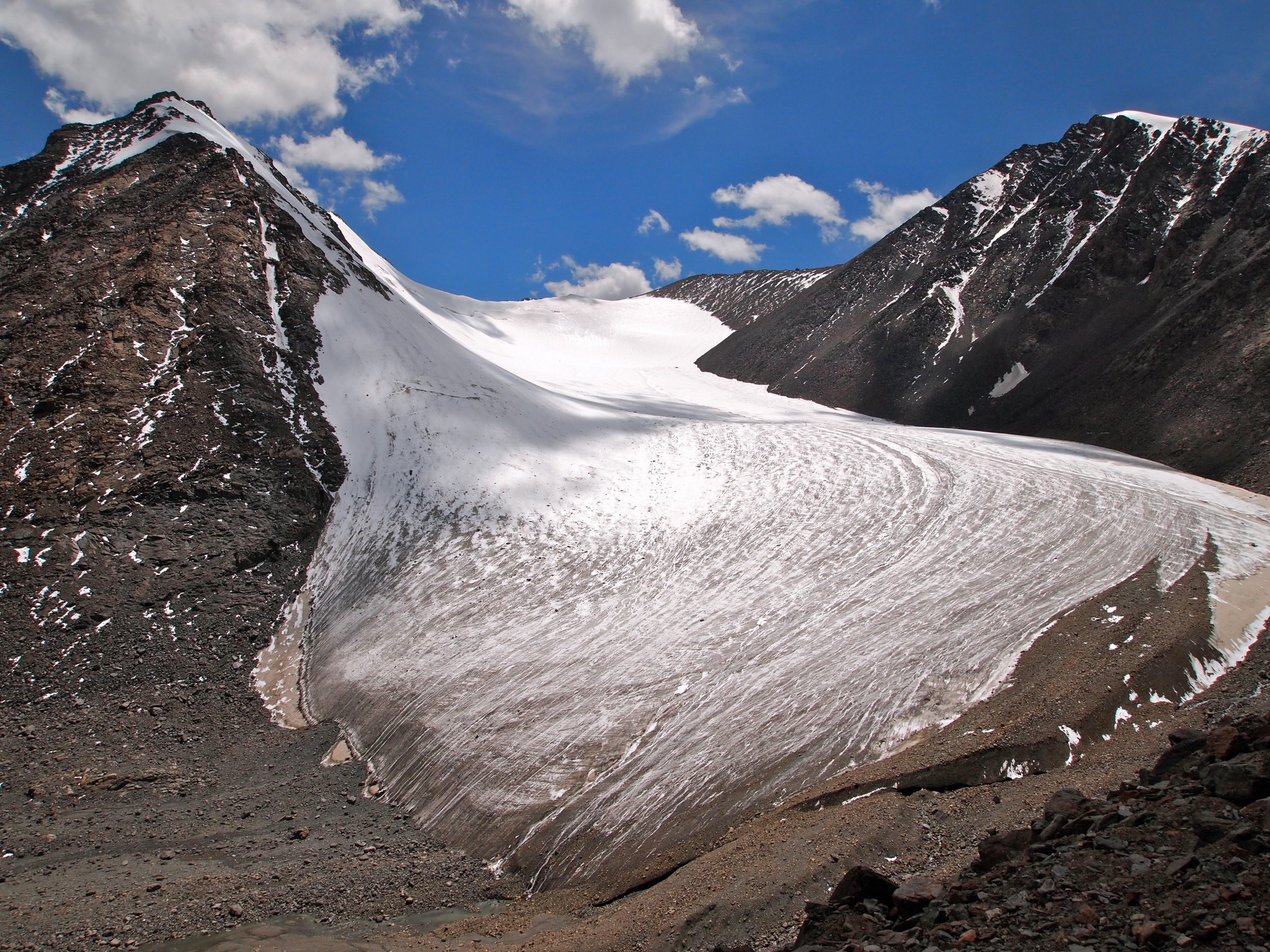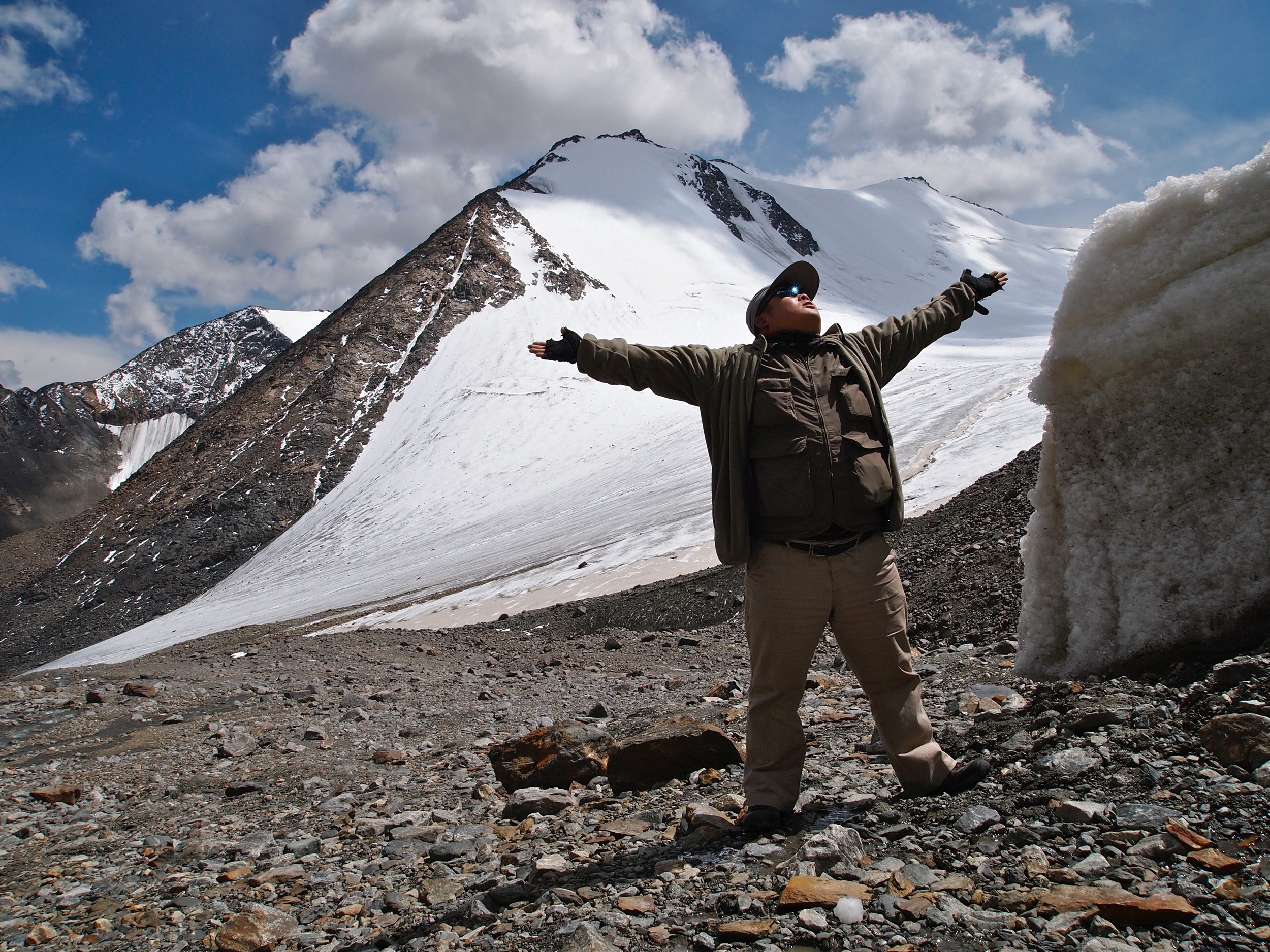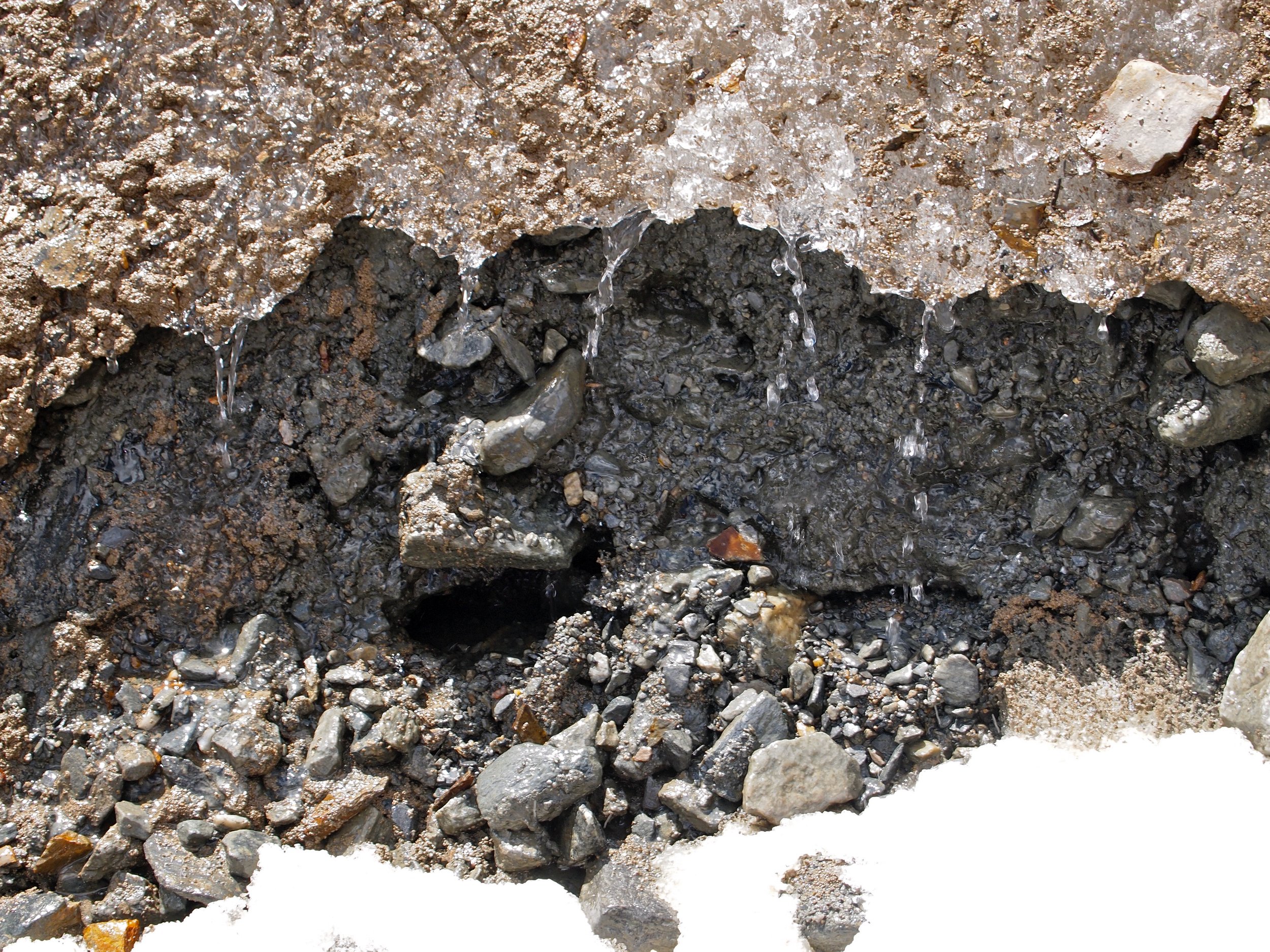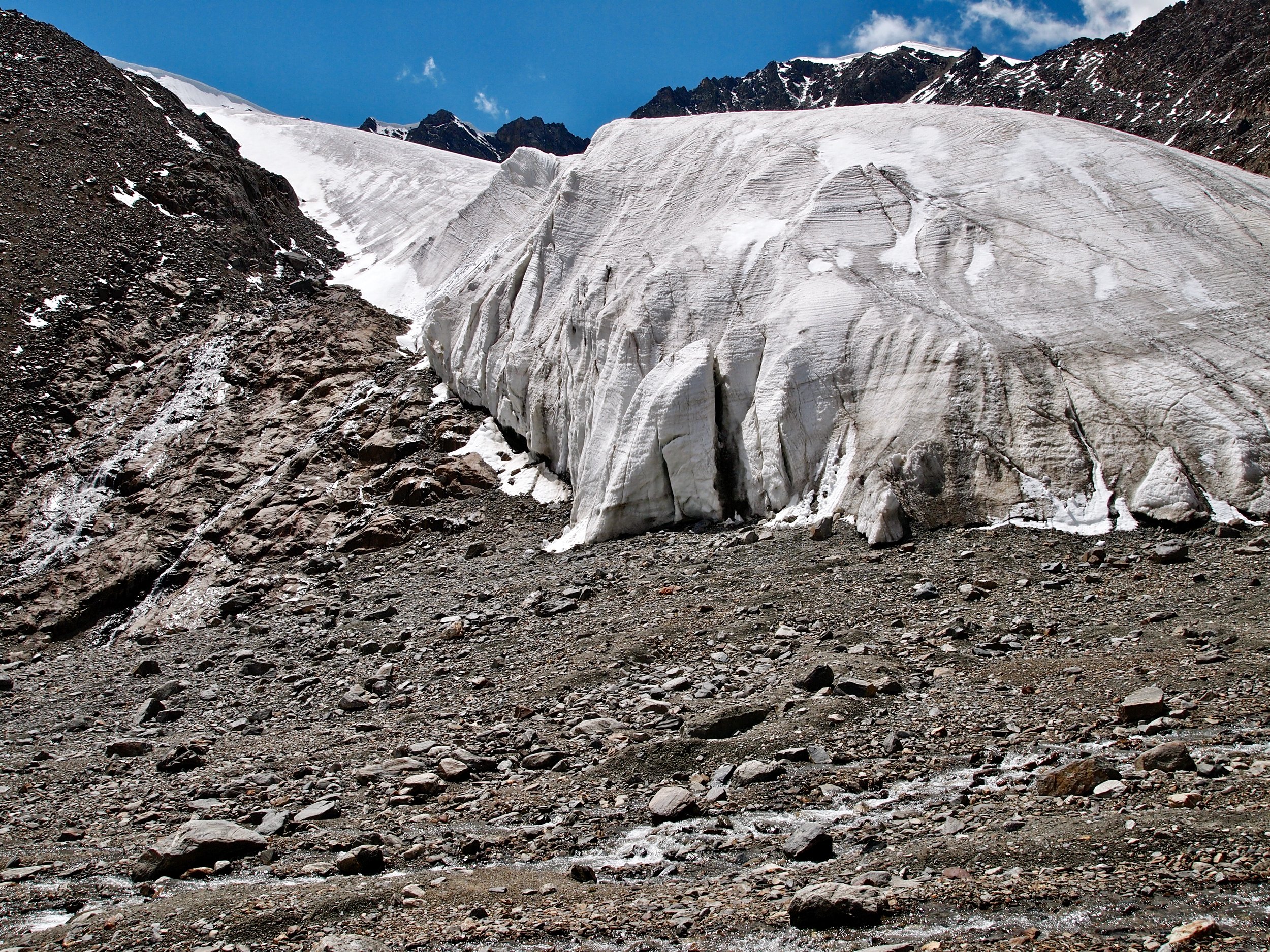
ASIA’S WATER TOWER IS MELTING
They are the source for some of the world’s greatest rivers. But the glaciers of Western China are rapidly shrinking, threatening the water supply for 1.8 billion people.
“You mind if I play some music?” mountain guide Huang Bo (34) asks. We’re standing at the foot of Tianshan Number 1 Glacier, high in the mountains southwest of Urumqi. After a three hour car drive and a thirty minute hike on foot, we’re far removed from anything and anyone.
The only sounds are those of the wind and of water drops falling grom the glacier’s edge into the beginnings of a stream. It’s July. Huang takes in the landscape, then presses a button on his mp3 player. From a speaker in his backpack, the tones of a Christmas carol break the silence: ‘Let it snow, let it snow, let it snow.’
“This area used to be covered in ice and snow all year round,” says Huang, pointing downhill. Now, in the heart of summer, you have to climb to 3,500 meters to reach the lowest reaches of the Tianshan Number 1 Glacier.
Urumqi, capital of the Xinjiang Uyghur autonomous region of China, is further removed from the sea than any other city on earth. From that perspective, you wouldn’t expect its four million residents to be thinking too often about rising sea levels. But the cause of this rise, the warming climate, threatens them as well.
The average temperature in Xinjiang is rising faster than anywhere else on the planet. This causes the glaciers, the only source of water for the region, to disappear at much quicker rate than previously calculated.

“Over the past decade it has gotten a full degree warmer on average,” says professor Li Zhongqin. Li is heading international research into the shrinking Tianshan Number 1 Glacier. “Glaciers are the first phenomenon in nature that react to changes in the climate,” Li says Li. “This glacier here does that in the most average way of all glaciers on earth. That makes it the perfect example to study what all glaciers on earth have coming for them in the not too distant future.”
That future is a dark one. The melting rate of the Number One glacier has been speeding up each summer since 1977. The rain and snow fall and the below zero temperatures of winter are no longer adequate for the glacier to grow back what it loses during summer meltdowns.
Li: “Since 1986, the amount of water that flows down to the city from the melting glacier has doubled. The length of the entire glacier has shrunk to 2.5 kilometers. That's 25 per cent shorter than it was only fifty years ago.”
It is inevitable the glacier will disappear in its entirety within a hundred years, Li and his team have calculated. That means millions of Chinese stand to lose their primary source of fresh water. What’s more: the glaciers in the mountains of western China are the source for some of the world’s longest rivers, including the Yangtze, the Mekong and the Yellow River. Close to two billion people rely on these rivers as their water supply.

In Urumqi, a hundred and fifty kilometers downhill from the Tianshan Number 1 Glacier, the looming water shortage seems to be on no one’s mind. After all: the melting glaciers has caused more water than ever before to flow through the river that comes down from the mountains into the city. In addition, there’s been more and more rainfall over the past few years. This makes it difficult for the people of Urumqi to imagine, let alone worry about, a structural water shortage which will hit their city only a few decades from today.
Even though the local government has begun building reservoirs to capture the water from the glaciers, the short term focus seems to be on profiting in other ways from the extra water that’s coming down.
Construction projects worth billions are planned the to stimulate the economy in this desolate region, which has also seen unrest and repression stemming from ethnic tensions between the Uighur population and Han Chinese.
Six kilometers from downtown Urumqi, the Snow Lotus Golf Club has been constructed. To keep the grass in the desert land green, the amount of water equivalent to the contents of seven Olympic sized swimming pools is used daily.
Not too far away from the golf terrain lies the Silk Route Ski Resort. Its manager is proud to say that during the peak season, last February, they were able to offer beautiful artificial snow on the slopes. It did take ten snow blowers using enough water to fill sixteen Olympic sized swimming pools.

South of Urumqi, the government is planning a 'high-tech desert metropolis' which has to fill up the space between the regional capital and its suburbs. The city proper wants to transform itself into an 'ecological park city' with green, lots of green that will need lots of water.
Professor Li stares through a window in his research center at the foot of the mountains. He can see the river which transports the melted water from the glacier to the city.
“It's good the city decided to build those reservoirs,” he says. “They even helped in increasing the amount of fertile land around Urumqi. But they are missing the bigger question, which is: what to do when the inevitable happens and there really is no more fresh water? The next drought, which is inevitable, will make Urumqi unlivable. It will leave millions of people with only one choice for survival: leave.”